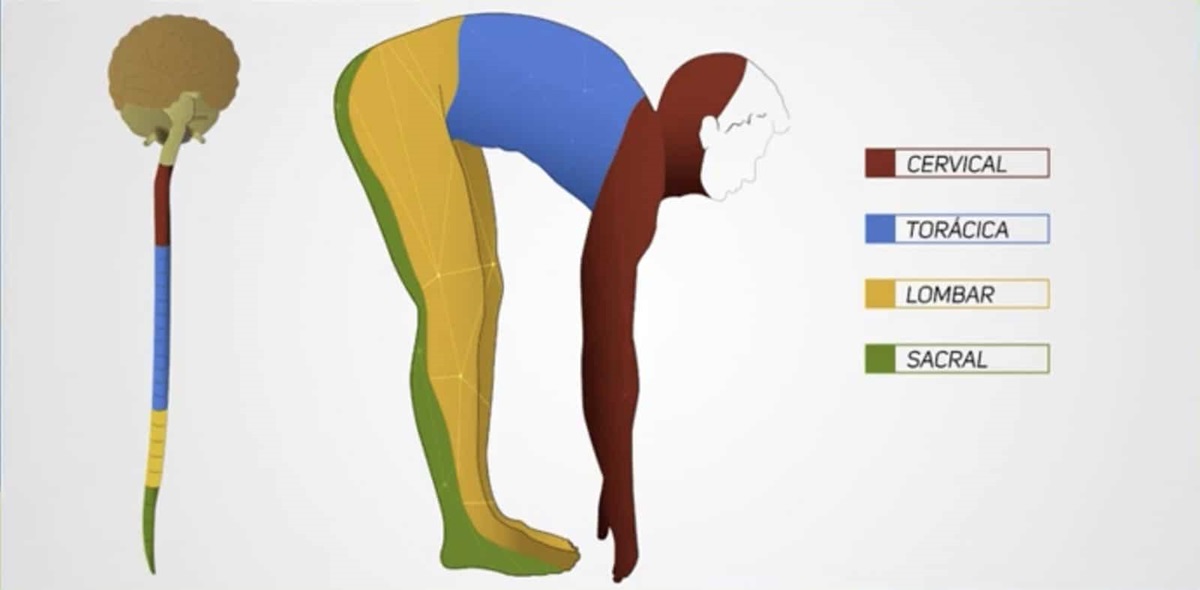Do you know someone with a square body shape, super organized, who loves to please and do everything for others, even when it harms them? Get to know the masochist character structure, one of the Reichian types full of amazing abilities!
There are 5 Reichian character structures. Don’t be alarmed by their names. They are scientific names that have been maintained since they were created.
- What is the masochist character structure?
- The humiliation wound
- Physical characteristics of the masochist character defense
- Head
- Eyes
- Mouth
- Torso
- Hips
- Legs
- Masochist structure in pain
- Explode or implode
- The gifts of the masochist character structure
- What to expect from people with the masochist adaptation
- Next steps
What is the masochist character structure?
The masochist forms between 2.5 and 3.5 years of age when the child is being potty trained.
The myelination process is taking place, which adds control to the body. This control starts from the head and extends to the end of the spine. In the image below, the yellow color in the lumbar spine region shows where the child is gaining strength and control at this time.
The nerves go from there to the legs and hips, supporting all of that musculature.
The child also gains control of the sphincters, the muscles that help hold in pee and poop. Many parents do not understand that this control is partial – one day the child can do it, and the next they may not be able to – and start potty training too early.
The parents then complain that the child did not ask to go to the bathroom, but they didn’t know that they were going to have an accident. The child does not yet have the perception and control to feel that they need to go pee or poop.
The child is only ready for potty training when they can climb stairs on their own without holding onto the wall or railing. This indicates that their lumbar spine is fully myelinated, and therefore they can control their sphincters.
Parents, without understanding this, become demanding and start pressuring or mocking the child, causing them the pain of humiliation and giving rise to the masochist character structure.
The humiliation wound
Many times, adults scold the child in front of other people; then they feel humiliated, and this shapes the masochist character defense. The child then creates defense mechanisms, and at this moment the masochist resource is developed.
When the myelination of the urinary and anal sphincters begins, the child starts to feel the “alert” that something in their body is built up and needs to come out. They still do not know how to warn in time or control this musculature properly, so they start pushing with their buttocks, locking themselves in to try to hold in the poop.
When criticized and questioned about why they did something, and not having an explanation to give, the child only absorbs that demand. After experiencing their pain, the child begins to develop their resource. The next time, they pay more attention and create in their mind a process to avoid doing something wrong again.
This effort comes with a sense of: “I have to endure what is inside me; so if they are already fighting with me, I will stay quiet and silent.” The child develops the ability to endure the external world, what is happening to them and other people.
This person understands that it is necessary to close off, to protect oneself because they are strong and endure. They tend to be more reclusive, because the more people around, the greater the humiliation they feel they will experience if they “let it slip.”
Physical characteristics of the masochist character defense
Our emotions communicate with the nervous system, which shapes our body to interact with the external world in the best possible way. Thus, the body of the masochist is strong, with square aspects, capable of enduring a lot.
Their musculature is denser and the masochist tends to tense it up due to the sensation that they will be criticized for something they cannot explain, so it’s better to lock it up and not let anything negative come out. Additionally, since the masochist needs to be strong, their skin tends to be tougher and denser.
As an example of a person with a predominance of the masochist character structure, we have Dilma Rousseff. She has a more square and locked face, as well as her torso. Her shoulders seem to carry a lot of weight. Overall, she carries a very evident masochist adaptation.
Let’s now see how each part of the masochist’s body is.
Head
The head of the masochist is more square, their skin is thicker and there are tension points as if they were constantly worried.
Eyes
In their eyes, there is also a weight with eyebrows that lower the gaze, and bags or swollen dark circles underneath. The masochist character structure conveys a sense of fear or a desire to avoid eye contact with others in their gaze.
You may also have the feeling that they are angry, or ready to submit to you.
This whole set can convey the idea of concern, and that’s exactly what the masochist feels. They think about whether they are doing right or wrong, whether they will be judged, etc.
Mouth
Here we see a very specific characteristic, which is the locked mouth. The muscles of the jaw and face tend to be harder, more locked, or emphasized. The masochist does not want to make physical or verbal mistakes. It is common for the shape of this mouth to compose an upside-down “U”, as if struggling not to open.
Torso
The torso tends to be more muscular and more square as a whole. It is a posture that holds a weight, and can create a hump in the cervical spine region, at the back of the neck. On the back, we also notice fewer curves. They are straight and flat.
Hips
The masochist’s hips are square, and this can be seen by observing the region alone or in relation to the rest of the body, as there is a straight line on its sides. The buttocks are hard and locked.
Legs
In the legs, we sometimes see thighs and calves with the same width, as if they were tree logs. In this region, there is a lot of energy, firmness and a lot of “load”. The masochist’s knees are pointed outwards, as are their feet, which are open. The calf muscle is large, but you don’t see curves, it is straight and has no shape.
In general, the masochist has a more rooted load. When you see them sitting, for example, it seems like they are going to stay there for a long time, as if they are creating roots. This happens because they feel more secure when they are still, sitting, and preferably with no one behind them.
The masochist character structure needs security and certainty to exist well. To better understand their world, let’s now talk about the masochist in pain and when using their gifts.
Masochist structure in pain
The more the masochist is in pain, the more withdrawn they become. It’s their behaviour pattern. In coping, they develop methods to feel like they can “handle” and endure, to deal with everything that happens around them, and even to express their feelings in a relationship. Someone with this structure has a high emotional dependency.
People with a predominant masochist character structure tend to give the impression that they hold on as much as possible, often appearing like a pressure cooker. There is a polarity between holding on as much as possible and exploding. This is linked to anger, which arises when they feel humiliated and hold it in until they can no longer bear it.
When they let things out, they end up exaggerating and may bring back things from years ago that the other person doesn’t even remember. However, the masochist not only remembers but also still feels it. Bringing it back and letting it out is not an exaggeration but a way to alleviate oneself.
The person with the masochist character structure tends to take pride in enduring what others cannot; but if this person doesn’t choose “what” to endure, they become a doormat that everyone steps on without much thought. The masochist in pain tends to close up, paralyze, and become static.
Explode or implode
The masochist who keeps their emotions to themselves is passive and has a self-destructive process because they direct their accumulated anger toward themselves. The masochist who explodes directs their anger toward the world.
In this case, feeling cornered, he starts bulldozing over everyone like a tractor. He becomes a kind of authoritative sergeant who needs to humiliate others as a self-defense.
These are the two variations of the masochist adaptation. The difference is not in the body shapes, but in the history, behavior, and way of dealing with the world.
The gifts of the masochist character structure
When he starts filtering what he carries, his resource starts to develop.
As the masochist seeks security, he “lets go” by trusting his environment and the people around him. This makes him create roots, making himself available, helping, expressing himself without nurturing the fear of judgment. A masochist using their gifts solidifies, executes, and makes things happen. When this person stops pleasing only others, they use their resilience to make money to fulfill their own dreams.
For more fast-paced individuals, the execution speed of the masochist may seem slow, but that is because they are very detail-oriented; they only take a step when they have confidence that it is the right one.
Masochists are very good at taking care of processes, methods, procedures, and things that require attention to detail. Other personality structures typically don’t have the patience for this level of depth.
They are very reliable individuals, people with whom you can share your burden. They put their strength at your service, but now, in a healthy way. If you start using their strength only to dump your pains, trash, and load, they will eventually put a stop to it. They finally realize that they have no gain in it when they start meeting their own needs.
What to expect from people with the masochist adaptation
What we can expect from a masochist is strength, caution, complicity, consistency, and attention to detail. They are very reliable and not the type to be open to infidelity in a marriage. What we cannot expect from a masochist is spontaneity, improvisation, or an automatic opening of their feelings.
The masochist doesn’t do well with improvisation, especially when in the spotlight. They become very insecure in such situations. In short, they require organization and a script, as they tend to blame themselves when they make mistakes. They hate making mistakes.
Yes, we can stimulate a masochist by showing them that we recognize their strengths and congratulating their efforts. Providing positive reinforcement and acknowledging their abilities can be beneficial in motivating and encouraging them.
Indeed, this is particularly true if you recognize these qualities publicly. If a masochist feels humiliated by criticism or negative feedback in front of others, they can also find a significant sense of well-being and greater encouragement through public praise. Acknowledging their strengths and accomplishments openly can provide them with a stronger sense of validation and motivation.
Next steps
Did you see yourself in this character structure? You can also read about the schizoid, oral, psychopathic, and rigid character structures.
We are a mix of five character structures with different intensities. Brazilian researchers created a method to measure the percentage of each structure in individuals. After finding out your combination, you will understand what problems you’ve been facing and how to solve them. You will receive clear instructions on how to manage and soften your character structures to make better decisions.
You will learn how to use your gifts to build a happier and healthier life. Schedule your free discovery session now.







